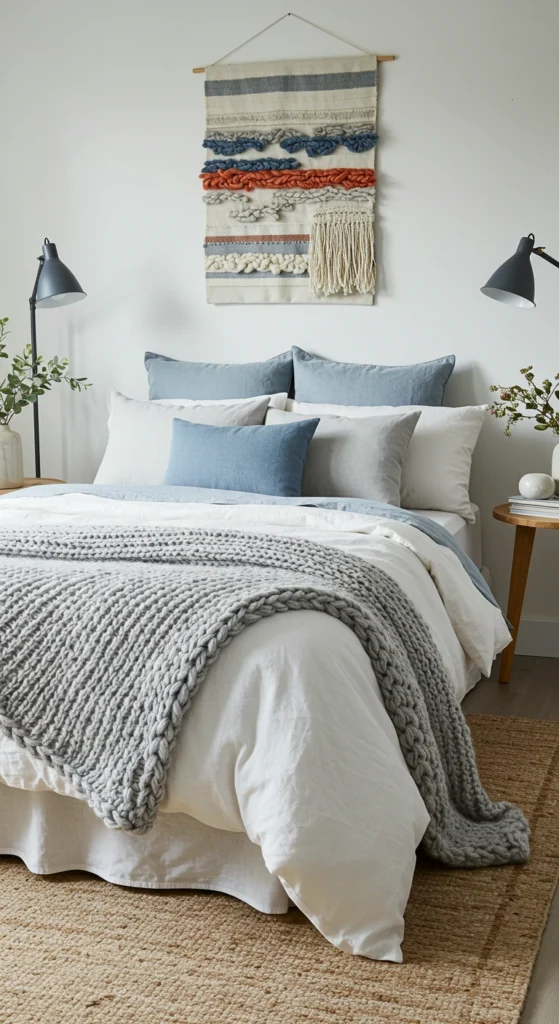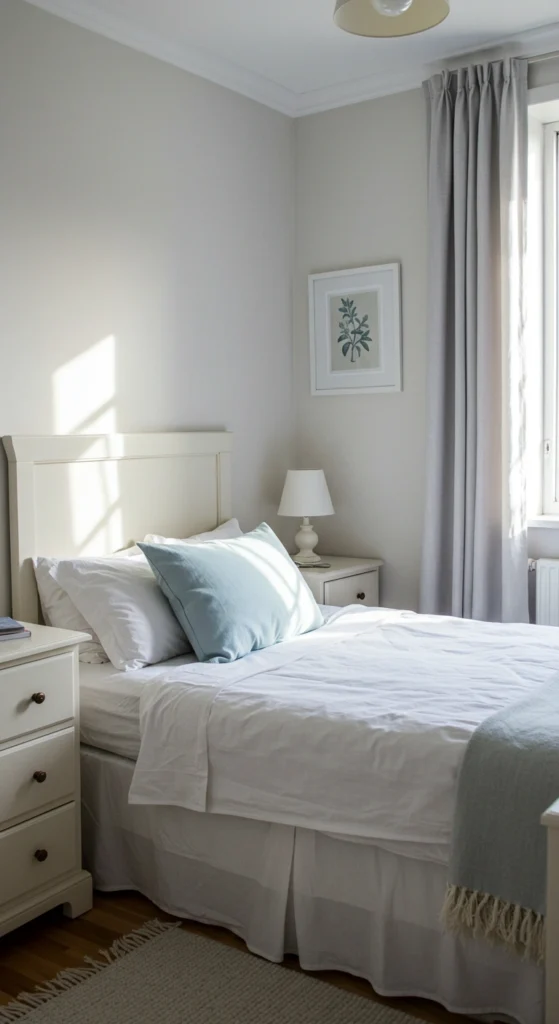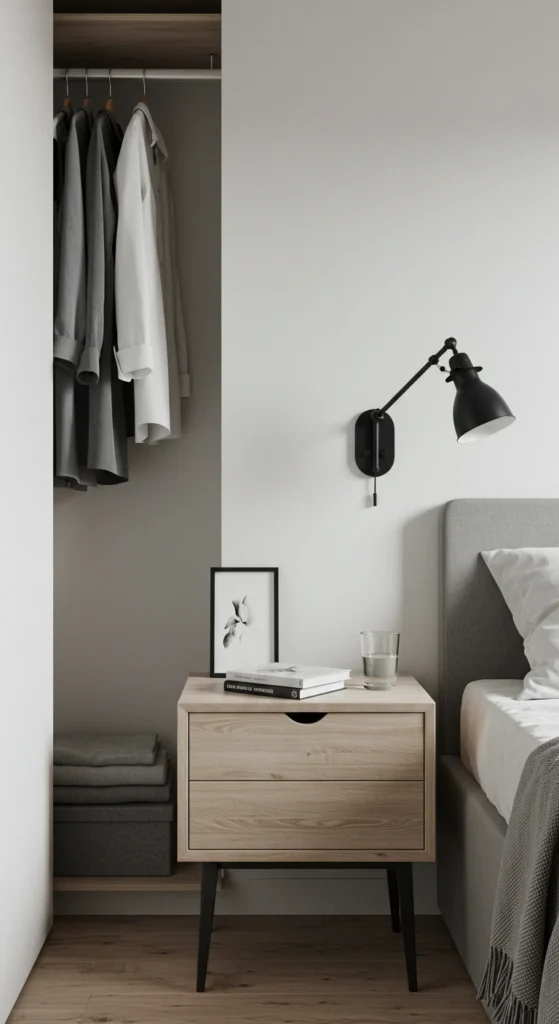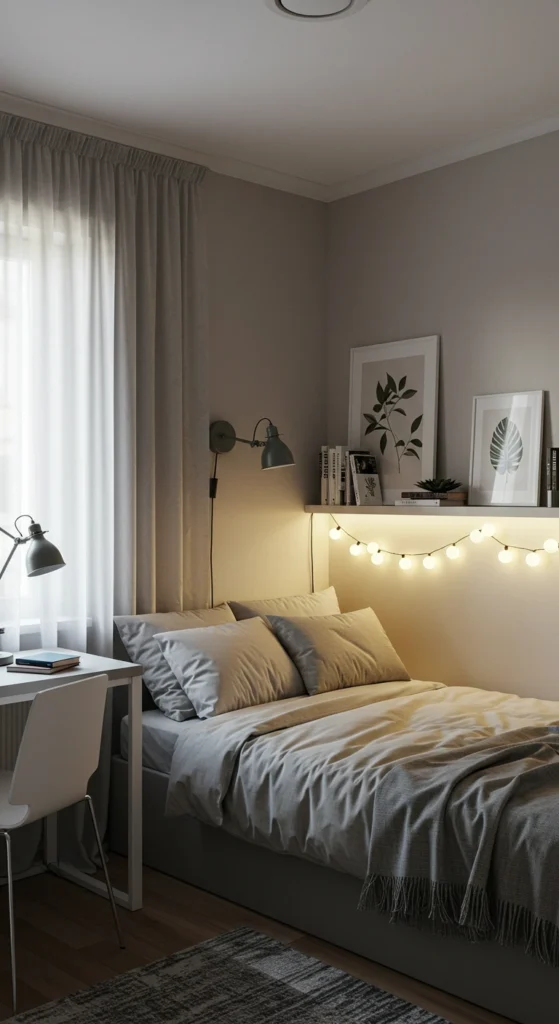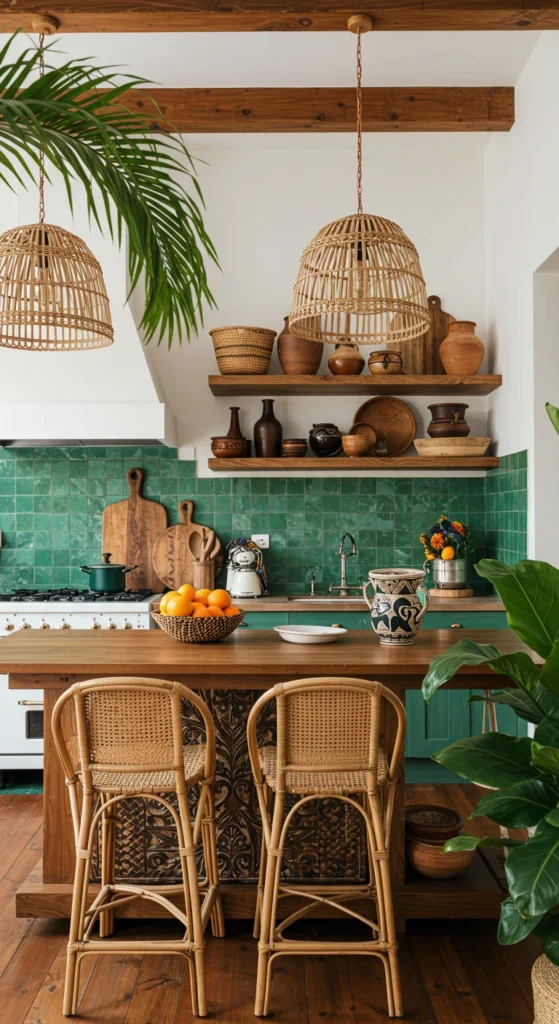Introduction
Transforming a small bedroom into a stylish, functional sanctuary can feel like an impossible challenge, especially when working with limited funds. The constraints of square footage often seem to multiply when your decorating budget is equally tight. However, a small space with minimal investment doesn’t mean you have to compromise on style, comfort, or personality. This article provides ten practical, budget-friendly strategies that can help you maximize both space and aesthetic appeal in your compact bedroom. By combining creativity with smart planning, you can create a room that feels spacious, reflects your personal style, and supports restful sleep—all without breaking the bank.
1. Embrace Vertical Thinking
When floor space is limited, the walls and ceiling become your greatest assets. Utilizing vertical space effectively can dramatically transform how spacious a room feels while providing functional storage that doesn’t encroach on your living area.
Install floating shelves in graduated heights to create visual interest while storing books, small plants, or decorative items. Position them near the ceiling to draw the eye upward and create the illusion of height. Wall-mounted nightstands eliminate the need for bulky bedside tables while providing essential surface area for alarms, reading materials, and night lights. For clothing storage, consider wall-mounted hooks or pegs for frequently used items, decorative wall-mounted clothing racks, or even a simple tension rod installed in an unused corner for hanging tomorrow’s outfit.
Cost-saving tip: Basic floating shelves can be found at discount stores for under $20, or you can repurpose old wooden planks with inexpensive brackets for an even more budget-friendly approach.
2. Harness the Power of Light Colors
Dark colors absorb light and make walls appear closer, while light hues reflect available light and visually expand the space. Creating a cohesive, light-colored palette serves as a foundation for making your small bedroom feel airy and open.
Choose soft whites, pale grays, light blues, or gentle creams for walls. Consider painting furniture in similar light tones to create a seamless look that doesn’t visually fragment the space. When selecting bedding, lighter colors create the impression of more space, though you can incorporate patterns or accent colors through pillows and throws for personality.
Cost-saving tip: Rather than repainting furniture, use self-adhesive contact paper in light colors (approximately $10-15 per roll) to transform dark dressers or nightstands. For walls, many hardware stores offer discounted “mistake” paints in light colors that cost significantly less than custom-mixed options.
3. Strategically Place Mirrors
Mirrors are perhaps the most powerful tool for creating the illusion of additional space in small rooms. They reflect both natural and artificial light while visually doubling the perceived depth of a room.
Position a large mirror across from a window to maximize natural light distribution throughout the space. Consider mirrored closet doors if your budget allows, instantly making the room appear twice as large. Even small decorative mirrors grouped together can create an artistic focal point while enhancing the sense of space.
Cost-saving tip: Check thrift stores, flea markets, or online marketplaces for second-hand mirrors at a fraction of retail prices. Often, outdated frames can be easily refreshed with spray paint for under $10 to match your decor scheme.
4. Invest in Multifunctional Furniture
In small bedrooms, every piece of furniture should earn its place by serving multiple purposes. This approach maximizes functionality while minimizing the number of items competing for limited floor space.
Consider a storage bed with drawers underneath or a lifting mechanism that reveals storage space—this eliminates the need for a separate dresser. Nesting tables can function as a nightstand but separate when additional surface area is needed. A small desk can double as a vanity with the addition of a mirror, serving both working and grooming needs.
Cost-saving tip: Look for secondhand furniture with good structural integrity that can be adapted for multiple uses. For example, an old trunk can be both seating and storage when topped with a cushion, while a floating shelf installed at desk height creates a workspace without the bulk of traditional desk legs.
5. Practice Ruthless Decluttering
Perhaps the most cost-effective way to improve any small space is to be intentional about what you allow to occupy it. Decluttering costs nothing yet dramatically impacts how spacious and peaceful a bedroom feels.
Implement the “one in, one out” rule to maintain control over possessions. Regularly assess items based on both functionality and joy—if something serves no purpose and generates no happiness, it’s taking up valuable real estate. Use under-bed storage containers for seasonal items, keeping only current-season clothing in your active closet space.
Cost-saving tip: Repurpose shoe boxes covered with decorative paper as drawer dividers to organize smaller items, preventing drawer clutter that leads to purchasing duplicate items. This organizational approach actually saves money long-term by preventing unnecessary replacements.
6. Create Smart Storage Solutions
Small bedrooms require creative thinking about where and how to store necessary items. The key is finding or creating storage in typically unused spaces, maximizing every square inch available.
Install tension rods in awkward alcoves to create instant hanging space. Utilize the inside of closet doors with over-door organizers for shoes, accessories, or toiletries. Consider raising your bed with sturdy bed risers to create additional under-bed storage space—some risers even come with built-in USB ports and outlets to eliminate the need for bedside charging stations.
Cost-saving tip: Repurpose common household items for storage: empty candle jars for jewelry, magazine holders mounted sideways for clutch purses or flip-flops, or shower curtain rings on a hanger to organize scarves or belts.
7. Master the Art of Upcycling
Transforming items you already own or inexpensive secondhand finds into customized pieces adds personality while keeping costs minimal. Upcycling allows for personalized decor that perfectly fits your space and style needs.
Transform wooden crates into bedside storage by stacking and securing them, then adding paint or stain for a cohesive look. Convert an old ladder into a blanket display or clothing rack with minimal modifications. Give outdated lamps new life with fresh shades or a coat of spray paint matched to your color scheme.
Cost-saving tip: Join local “Buy Nothing” groups on social media platforms where community members give away unwanted items—often perfect candidates for upcycling projects. Your only investment becomes the materials needed for transformation, typically costing under $20 per project.
8. Embrace DIY Wall Art
Art and decor can quickly consume a decorating budget, but DIY alternatives provide high visual impact with minimal financial investment. Personalized wall art also adds meaningful character to your space.
Create a gallery wall using printed photographs in identical frames for a cohesive, intentional look. Frame fabric scraps, beautiful gift wrap, or pages from old books that feature colors complementing your decor scheme. Paint simple geometric designs on canvas using painter’s tape to create clean lines—even beginners can achieve professional-looking results with this method.
Cost-saving tip: Dollar stores often carry simple frames that can be customized with paint or metallic markers. For canvas, check clearance sections of craft stores or reuse old canvases by painting over unwanted artwork with a primer coat.
9. Layer Your Lighting
Small bedrooms particularly benefit from layered lighting, which creates different moods while illuminating dark corners that can make spaces feel smaller. Strategic lighting makes a room feel larger and more versatile.
Maximize natural light with sheer window treatments that provide privacy without blocking sunshine. Incorporate task lighting near functional areas like bedside reading spots or desks. Add ambient lighting through string lights, small lamps with low-wattage bulbs, or LED strip lights to create a cozy atmosphere and visually expand dark corners.
Cost-saving tip: Battery-operated puck lights can be installed under shelving for custom lighting without electrical work, typically costing under $15 for a set. Solar-powered string lights near windows charge during day and provide free illumination in evenings.
10. Focus on Textile Impact
Textiles add warmth, texture, and personality to bedrooms without requiring major investments or permanent changes. They’re also easily exchangeable when you desire a refresh.
Layer bedding with different textures but compatible colors to create visual interest without overwhelming the space. Use appropriately-sized area rugs to define zones within the room—a small rug under the foot of the bed can add color without overcrowding the floor visually. Consider fabric wall hangings as an alternative to headboards, adding texture and color without the bulk.
Cost-saving tip: Shop end-of-season clearance sales for high-quality bedding at dramatic discounts. Flat sheets from thrift stores can be transformed into curtains, duvet covers, or pillow shams with basic sewing skills or even fabric adhesive tape.
Conclusion
Decorating a small bedroom on a budget isn’t about limitations—it’s about creative problem-solving and intentional choices. By implementing these ten strategies, you can craft a space that feels both larger and more personalized without significant financial investment. Remember that small transformations applied consistently create meaningful change over time. You don’t need to implement every idea at once; instead, prioritize based on your specific needs and gradually build your ideal space as resources allow. The most beautiful rooms aren’t necessarily the most expensive ones, but rather those that thoughtfully reflect their inhabitants while functioning efficiently for daily life. What budget-friendly transformation will you tackle first in your small bedroom?
